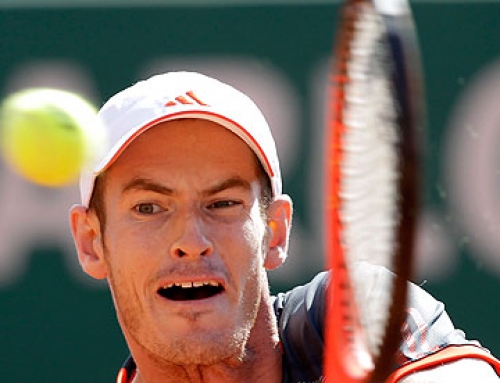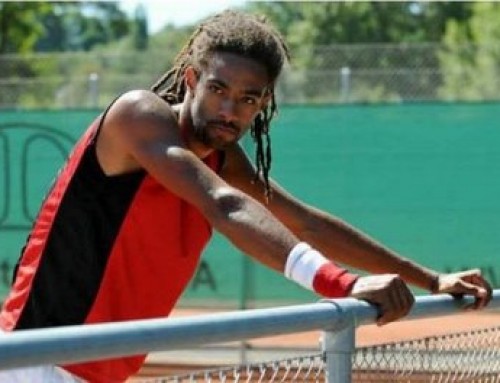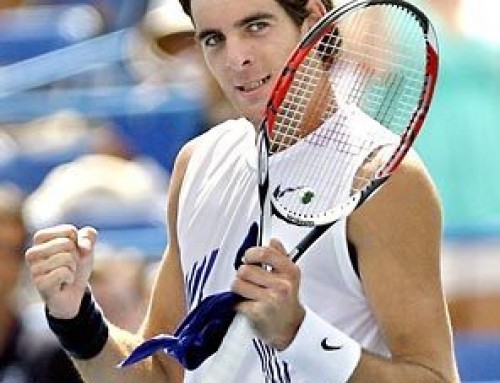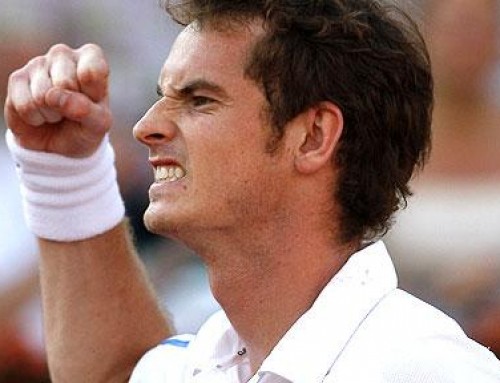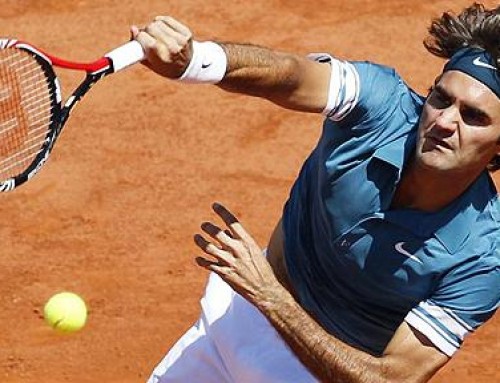If you were Federer’s coach–and he’s had none in quite a while, despite overtures to Darren Cahill–what would you suggest Federer do?
You’d probably tell him to run around his backhand to counteract Nadal’s constant barrage of serves to his backhand. You’d probably tell him to play long points and learn to be patient with Rafa. You’d tell him to look at Novak Djokovic’s play and tell him to play like Djokovic.
But Roger, he’s a stubborn one. He plays the way he plays, full of high risk. He wants to be in control of the matches, even when he’s not full in control of his own play.
There are two ways to play Rafa. You play him like Djokovic. Play long rallies. Look for opportunities. Hit the big shot. Hope it goes in.
Then you play like Fed did. You take your chances. You go for big shots. Lower ranked players play this way. Gabashvili tried this, but made way too many errors. None of them are at Fed’s level of play.
If Federer has someone to thank for his win, he can thank Djokovic. A long 4 hour match, the longest in Masters 1000 history, meant Rafa was less than fresh in a final. Rafa is often at his most vulnerable after playing a long match with no rest. It also helped that Djokovic was in Nadal’s part of the draw, so he only had to play one of them, and not both. Fed would have had more trouble in the final playing Djokovic.
Unlike the Australian Open where Rafa got a day of rest, Rafa had to come back from his epic win over Novak Djokovic, less than 24 hours to face a fresh Roger Federer who had won handily over up-and-coming Argentine, Juan Martin del Potro.
Federer can also thank Madrid. The altitude means Rafa has had concerns about keeping the ball in play due to Madrid’s high altitude. Witness his problems against Novak in the semis.
Despite the length of the semifinals, you can hardly pick against Rafa. Rafa is the king of clay and this was the first Masters 1000 for Fed this year. He hadn’t beaten Rafa in over a year. His confidence was shot from Rafa’s AO win. Everyone was wondering whether Fed could even compete against Rafa. Roger, despite the losses, still believed in himself.
The result you’d expect least was a easy Fed win over Nadal, but that was what happened. Fed picked the most bizarre strategy imaginable. He went Sampras. Key to beating Nadal was serving well. Fed could have tried to outlast Rafa (ha!), or to serve-and-volley like Edberg. Unlikely. His best chance was to serve better. Get more serves in. Dominate with big serves. Do it Sampras-style. And that was key to beating Nadal.
Beyond that, Fed just decided he was going for big shots as much as he could. He wasn’t going to get into long rallies with Nadal. Who knew Rafa needed high shot count to feel comfortable with a match? Fed was not going to get into 20 shot rallies. If a rally went 10 shots or less, perfect. Quick points, quick points, quick points.
Fed opened up with a style I can only call serve-and-strike. Hit a big serve, take the short return, and power to the corners. That combined with a big serve, and Fed was actually holding serves. Despite a few hiccups where he missed shots, Fed managed to get enough in, often clipping the line, that Rafa had troubles.
On Rafa’s serve, Fed simply took chances. For most games, this meant Rafa managed to hold easily because Fed was giving him errors. But Fed got a break in each set, Sampras-style, and held his serve, despite close calls.
Just when you thought Fed had no answers to Rafa, he puts his high-risk style in overdrive.
And what does it mean for the French? It means wait and see. The tournament is two weeks long. Fed is probably fervently wishing that Djokovic is in Rafa’s half of the draw, like he was at the French. He’s hoping for a gruelling 5-set win for Rafa or perhaps for Noval. The French surface will be friendlier than Madrid, so it will again favor Nadal.
Until then, Roger can be happy that he won a big tournament, his first in quite a long time.
Welcome back.




